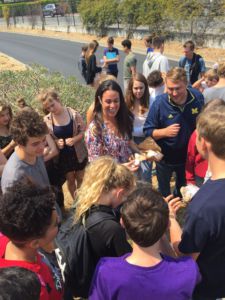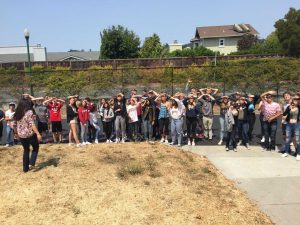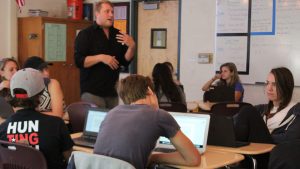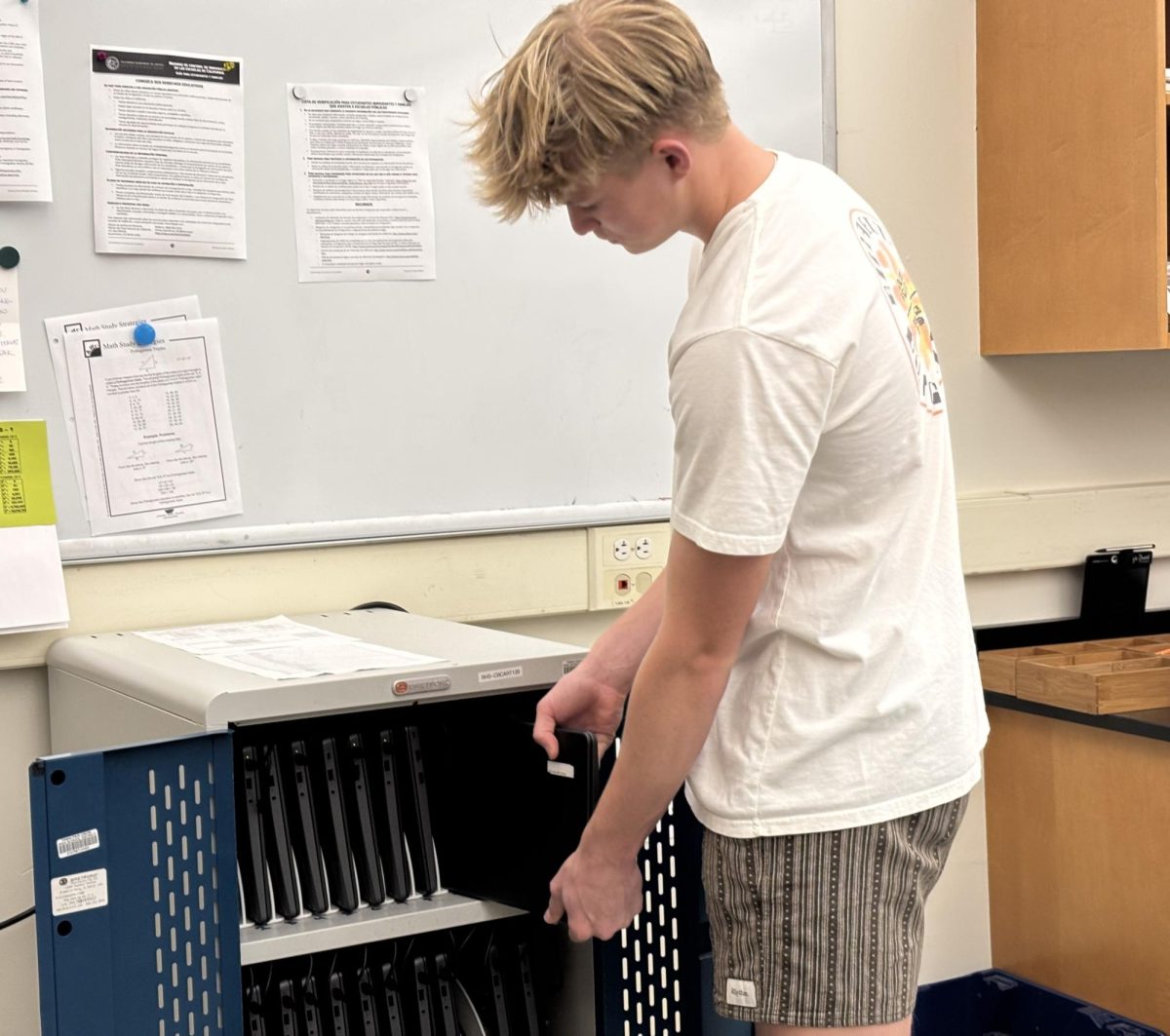English teacher Cathy Flores-Marsh and social studies teacher Stephen Hart teamed up in a new academic program this year by combining their freshmen classes to create more of a connection between history and literature.

During fifth and sixth period, the roughly 50 students in this program are scheduled for both Hart and Flores-Marsh. Half of them attend Hart’s class for World Cultures and Geography/Social Issues and the rest go to Flores-Marsh’s class for English for one period before swapping teachers for the next period.
According to Hart, most days the students will be in separate classes, but the work that they do in his class will continually relate to what they’re doing in Flores-Marsh’s class. The periods are back to back, allowing the teachers to push the periods together if needed.
The duo determines each day if it’s more useful to have the classes together or separate based on the material they will cover that day.
“When we are team-teaching there might be some days where one person might be leading the discussion, but generally speaking we balance off each other pretty well,” Hart said.

Through group work and projects, Hart and Flores-Marsh hope to show their classes that the content of each of their respective classes overlap.
“Oftentimes I think students go through school feeling that what they learn in classes is isolated to that class,” Hart said. “Hopefully this starts the
process of expanding that view and seeing that these things that we are touching on not only span across multiple disciplines but then also beyond Redwood.”
Students are still assessed like their peers in more traditional English and Social Studies classes.
“The content hasn’t changed at all, but what has changed is the way it’s delivered and the tasks that they have to accomplish to show proficiency in each of our subject areas,” Flores-Marsh said.
According to both teachers, planning is extremely deliberate and requires giving up some class activities they usually do to make room for new activities.
“It’s initially sort of time consuming but the output is so much better and the learning is so much better for the students,” Flores-Marsh said.
Team-teaching requires a pair of people that are comfortable with each other, according to Hart.

“We are fortunate because we have a shared conference period, and we are also just friends in general so we can shoot texts to each other,” Flores-Marsh said.
The process of getting the class fully approved and running took two years. Hart and Flores-Marsh had to talk to
the administration and their department heads, and attend workshops and conferences to learn more about project-based learning.
“We are hoping to make this, especially as the years go on, more project-based so it will require building those essential
team-working, collaborative skills, which we think is essential in being a successful high school student,” Hart said.

According to Flores-Marsh, she and Hart think that the students are excited to learn the subjects through this new program, and hope to gather data and learn what students thought of this new program at the end of the year.
“They’ve all responded well to our first couple of days and our first activity. We started off with a great energy and now it’s just ours to maintain it and
keep it exciting, fun and engaging,” Hart said.
Students have mixed reactions to this program. At first, freshman Spencer Johnston wanted to be in the regular classes because it was what the majority of his peers were doing. But after having the class for a few days, Johnston prefers the combined class.

Flores-Marsh and Hart hope to motivate fellow staff members to join them and extend the program beyond themselves. They believe it makes a stronger teacher because it forces them to think outside the box.
“In a way it keeps you fresh and engaged as a teacher,” Flores-Marsh said. “It allows you to grow because it has challenged me in ways that I didn’t know [it could]. It re-energizes you; it lets you fall in love with your subject area all over again which is really important.”





